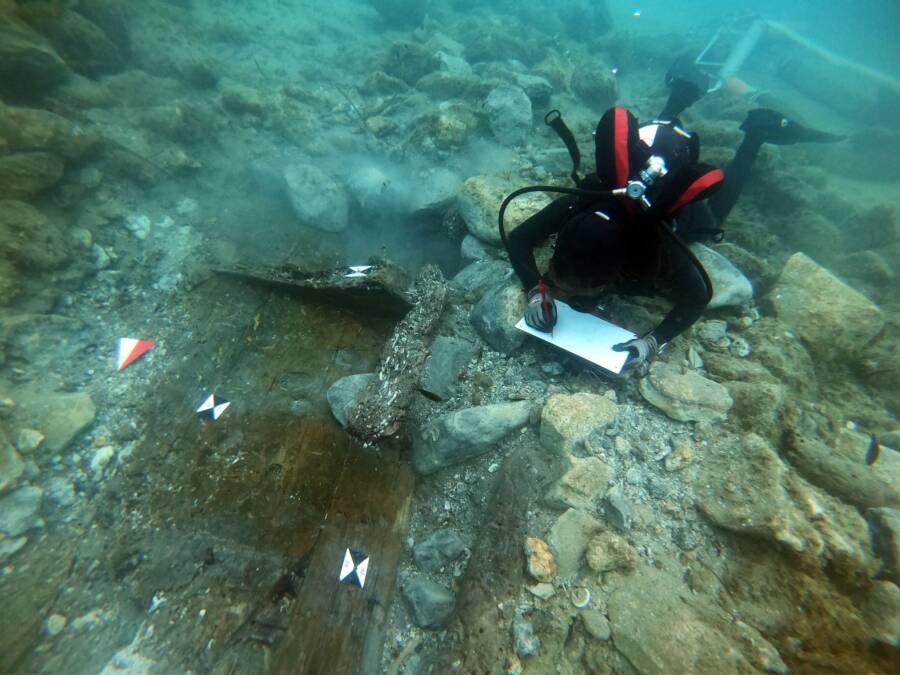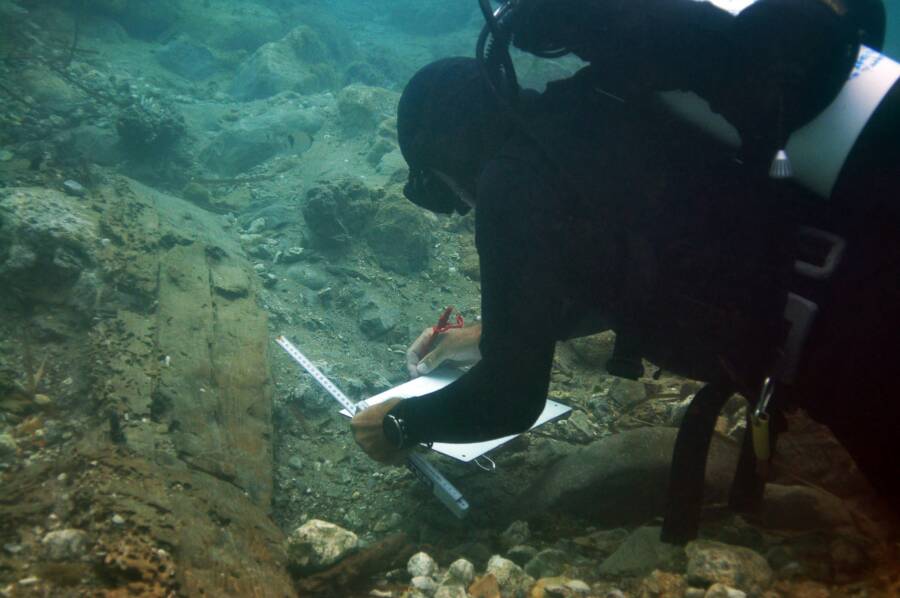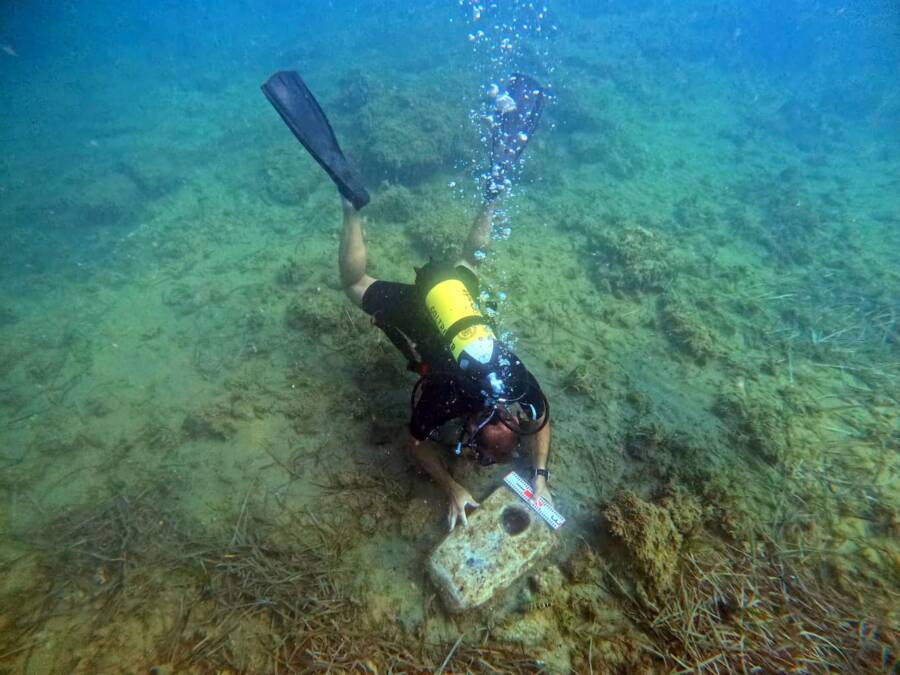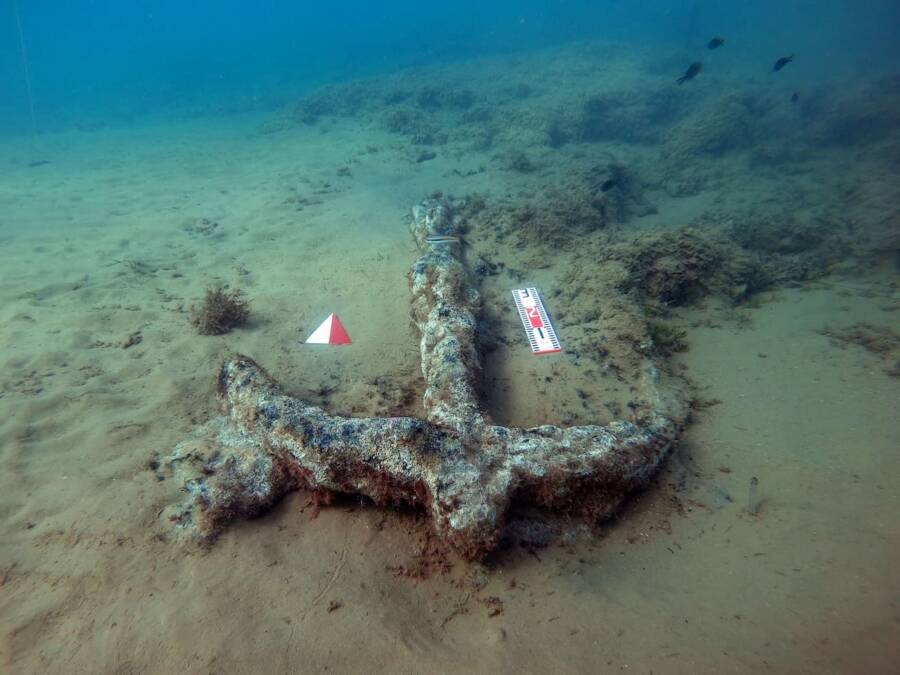Alongside the 2,500-year-old shipwreck, archaeologists discovered four prehistoric stone anchors and two iron anchors dating to the seventh century C.E.

Soprintendenza del MareUnderwater archaeologists study the shipwreck off the southern end of Sicily.
Hidden beneath the waters off Sicily’s southern coast, a 2,500-year-old shipwreck is revealing secrets of the ancient Mediterranean. In 2022, a diver and volunteer with the Italian organization Soprintendenza del Mare, or Superintendency of the Sea, spotted signs of the vessel off the coast of Ipsica, Sicily.
Now, archaeologists have completed a full excavation, uncovering the entirety of the wreckage as well as six anchors dating to various points throughout history.
Researchers Uncover A 2,500-Year-Old Shipwreck Off The Coast Of Sicily

Soprintendenza del MareThis ship sank between the fifth and sixth centuries B.C.E.
In 2017, the Soprintendenza del Mare and researchers from the University of Udine collaborated on the “Kaukana Project,” a program designed to uncover the country’s submerged cultural heritage and chart Sicily’s coastline.
In 2022, Antonino Giunta, a volunteer with the Soprintendenza del Mare and member of the group BCsicilia, discovered curious piles of stones and bits of wood while diving off the coast of Santa Maria del Focallo in the southern Sicilian comune of Ipsica. He reported the finding to the Soprintendenza del Mare, and this year, a team of archaeologists set to work excavating the site.
In September, the team completed the three-week excavation, and now the Soprintendenza del Mare is sharing more about their discoveries.
Investigating The Site Of The Ancient Shipwreck
Giunta had indeed found a shipwreck hidden beneath sand and stones in just 20 feet of water. The wooden vessel was constructed around 2,500 years ago using the “on the shell” technique, which involved connecting planks with dovetail joints. Little else is known about the ship, but it seemingly sank between the fifth and sixth centuries B.C.E.

Soprintendenza del MareArchaeologists found four prehistoric stone anchors alongside the wreckage.
The ancient vessel wasn’t the only discovery researchers made, however.
Alongside the shipwreck, archaeologists uncovered six anchors. Four of them were made of stone and had prehistoric origins. The other two were crafted of iron around the seventh century C.E.
Researchers collected samples from the site to hopefully identify the vessel’s building materials, environmental impacts on the ship, and any potential historical information regarding ancient trade in the Mediterranean.

Soprintendenza del MareResearchers also found two iron anchors from the seventh century C.E. at the site.
“Thanks to underwater photogrammetry, it was possible to generate a three-dimensional model of the wreck, while the samples collected will allow further paleobotanical analyses to further study the materials used,” researchers wrote in a statement from the Soprintendenza del Mare on Facebook.
It remains to be seen exactly what other information the wreckage will reveal, but it could shed light on trade between Greece and Sicily thousands of years ago.
After reading about the ancient shipwreck found off the coast of Sicily, go inside nine of history’s most famous shipwrecks and the stories behind them. Then, learn about 44 ancient artifacts that unlock the mysteries of our past.





